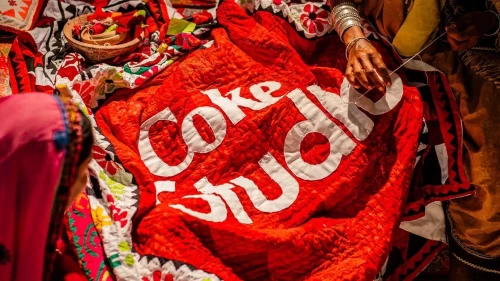
Taking the agriculture growth rate from less than one per cent in 2018-19 to 3.5pc in 2019-20 is an uphill task. How effectively the federal government facilitates the provinces and how hard the latter strive to increase their agricultural output will decide the fate of this sector in 2019-20.
A lack of effective coordination between the federal and Sindh governments was one of the factors behind 0.85pc growth in agriculture against the target of 3.8pc. The PTI, PML-N and PPP working in harmony for economic progress will make it easier for provincial governments to achieve sector-wise growth targets.
But if they can’t, there is not much hope for an economic revival, let alone meeting the growth target in the agriculture sector. The post-budget talk about a charter of economy to be signed by major political parties indicates that those who wield real power in Pakistan are serious about fixing economic issues. But how this pans out in due course will be interesting to see. People can only hope for the best.
The federal government has earmarked only Rs12 billion for the agriculture sector in 2019-20 as it is a provincial subject. But budget documents show that Rs78.5bn development spending has been proposed for food, agriculture (including livestock, forestry and fisheries) and irrigation sectors.
Punjab plans to set up model auction markets for agricultural produce, which will ensure fairer crop prices and timely supplies
The problem, however, is that this projected development spending is part of a five-year agricultural revolution that Prime Minister Imran Khan wants to bring about. Under the difficult federal fiscal circumstances, the provinces should be ready to see a drastic cut in it. They will have to push agricultural growth with their own resources.
A closer look at provincial development plans for food, agriculture (including livestock, forestry and fisheries) and irrigation sectors reveals that the provinces are expecting foreign funds to partly finance these plans. Here again, the release of foreign assistance for each development scheme cannot be guaranteed in advance. Such assistance is always subject to progress on specific schemes and its review by lending agencies concerned. A recent example is the suspension of $200 million World Bank loan to Balochistan, which was supposed to benefit 42,800 small and mid-sized farmers.
For 2019-20, Punjab has allocated Rs113.6bn for food, agriculture (including livestock, forestry and fisheries) and irrigation sectors. The province plans to establish model auction markets for agricultural produce in all districts under public-private partnership. The implementation of this scheme will see the emergence of a more orderly agricultural supply chain, help farmers get a fairer price for crops and other farm produce, squeeze room for the middleman and ensure timely and fair-priced supplies in the market.
Punjab has also unveiled plans for a wider use of solar energy panels for drip irrigation and sprinkler systems. That should help promote high-value agriculture. Similarly, plans for making Cholistan and Bahawalpur free of the foot-and-mouth disease and the strengthening of veterinary services networks in Dera Ghazi Khan, Lodhran and Rahim Yar Khan should help raise meat exports and elevate the dairy industry.
For 2019-20, Khyber Pakhtunkhwa has earmarked about Rs14bn for agriculture, livestock, forestry and food sectors. In addition, it has also allocated an equal amount for water supply schemes that also include the construction of micro-dams to facilitate the agriculture sector. The provincial finance minister did not speak about specific schemes while presenting the budget, but he took credit for bringing down the throw-forward period of all development schemes from six to about four years. This means the speedier implementation of development schemes.
The PPP-led Sindh province has allocated Rs33.4bn for development of irrigation, agriculture, livestock, fisheries and forestry. The largest chunk of it (Rs22bn) is reserved for irrigation. Good news is that the provincial government hopes to complete 163 schemes of irrigation development in 2019-20, including the one related to the installation of solar tube wells in the Khairpur district. Sindh has earmarked Rs8.4bn for 2019-20 Exclusively for agricultural development. Under the Sindh Irrigated Agriculture Productivity Enhancement Project, the provincial government is carrying out the lining of 1,850 watercourses. For livestock and fisheries, the Sindh government plans to spend Rs2bn and expects to finance 20 development schemes with this amount. The provincial government is going to spend Rs1bn on handling issues arising out of environmental changes and forestry.
Balochistan’s multi-party provincial government has set aside Rs8.2bn for agriculture and livestock development in 2019-20 and it plans to spend this amount on 113 development schemes.
Details of the schemes are not known. But according to media reports, many of them are aimed at improving the irrigation system in rain-fed areas, strengthening agricultural research and practices, increasing crop and orchard yields, promoting tunnel farming and modernising the livestock sector.
It was disappointing that there was no mention of Balochistan Bank in the budget speech of finance minister Zahoor Baleedi.
Two years ago, there was a proposal about establishing Balochistan Bank along the lines of Sindh Bank to help poor farmers get access to formal finance.
The federal government says that its development spending in Balochistan projected at Rs176bn for 2019-20 will also cover the Kachhi Canal Project to irrigate 0.7m acres of land in multiple phases. It should also inform the media and ordinary Pakistanis what happened to the idea of Balochistan Bank.
Regardless of the number of agriculture development schemes that each province has promised to initiate or continue in 2019-20, monitoring of such schemes and sharing their details with the media can help them keep on track. Details of important development schemes, including those in the agriculture sector, remain buried in official documents. People just hear about the allocated amounts during the budget season. It will help stakeholders if all provincial governments share the status of ongoing development schemes twice a year in plainly written reports. —MA
Published in Dawn, The Business and Finance Weekly, July 1st, 2019











































